A plantar wart is a benign squamous epithelial growth in the form of a growth that rises slightly above the surface of the foot.
Despite the fact that the risk of degeneration of a wart into a malignant tumor is minimal, it can still cause a lot of inconvenience to the one on whose sole it appears.
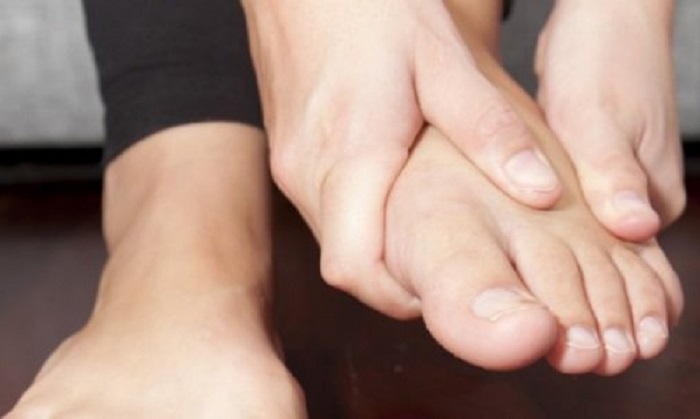
Being directly on the supporting area of the foot, the formation can provoke severe pain and a feeling of discomfort when walking.
Therefore, it is quite natural for people suffering from thorns (the second name for plantar warts) to get rid of them, in addition, traditional medicine offers a rich selection of recipes that are easy to prepare and easy to use.
Содержание:
What do plantar formations look like?
Outwardly, plantar warts, a wart on the heel vaguely resemble old dry calluses, however, a distinctive feature is the absence of papillary lines on them.
The formations on the sole are round or oval in shape with even and well-defined edges. Their size varies from a few millimeters to several centimeters. Also read how a plantar wart is trimmed in a child , symptoms and treatment.
They can appear in groups or singly. The color is predominantly flesh, yellow, pale or brown-brown.
The surface of the spine is most often rough, and black dots of clogged capillaries are visible in its center. Also, often the central part of the formation is somewhat deepened into the skin, which is noticeable even to the naked eye.
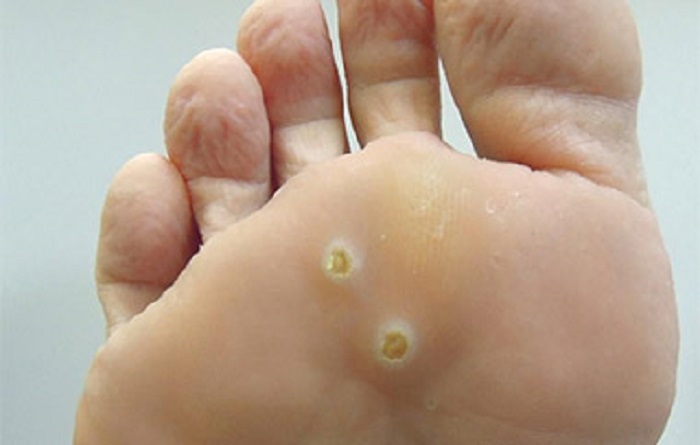
Why do they appear?
The main root cause of the appearance of a wart on the foot is infection with the human papillomavirus (HPV). Modern medicine knows more than 100 of its strains, and each type of virus affects certain parts of the human body. So, the appearance of plantar warts is caused by strains 1, 2 and 4.
After HPV enters the surface of the feet, the virus begins to infect healthy epithelial cells, and with a decrease in the protective functions of the body, the disease passes into the active stage. The result is the formation of single or group flat warts on the soles of the feet, which, as a result of constant friction against shoes when walking, quickly coarsen.
Methods of infection
- Use of towels, shoes, socks of an infected person who has HPV in the active phase.
- When walking barefoot in public places: baths, saunas, swimming pools, a gym, a kindergarten.
- When carrying out a pedicure with untreated instruments.
- As a result of sexual intercourse without a condom with a carrier of the virus.
- From mother to child during the passage of the latter through the birth canal or during breastfeeding.
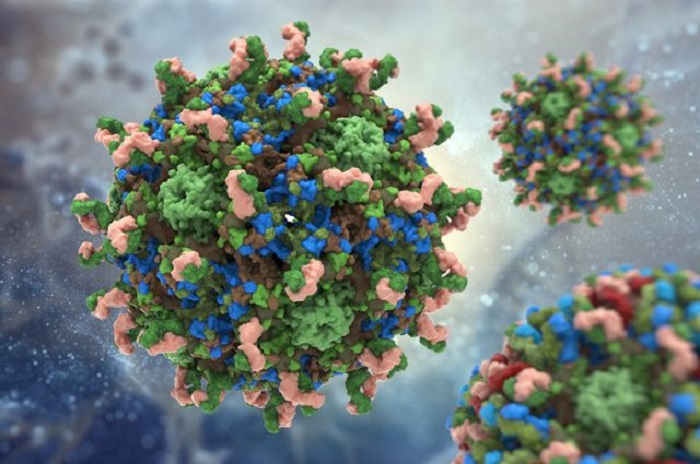
Factors provoking the disease
It is known that the HPV incubation period from the moment it enters the body to the first clinical manifestations can range from one and a half months to several years: the virus can stay in the body for a long time in a “sleeping” state. The following factors can provoke its activity:
- Hyperhidrosis is excessive sweating of the feet.
- Insufficient attention to the hygiene of the lower extremities.
- Wearing narrow and uncomfortable shoes of poor quality.
- Decreased immunity.
- Lack of vitamins and minerals in the diet.
- Frequent stressful situations.
- Diseases that result in impaired nutrition of the foot (diabetes mellitus, atherosclerosis, varicose veins).
Varieties and symptoms
In the process of its development, the spine changes its appearance several times depending on the stage of development; at the same time, changes occur in the sensations of the person – the carrier.
- First, a rounded seal appears on the surface of the sole, outwardly strongly resembling a corn. At this time, a person may feel slight pain that occurs after long walks. A characteristic symptomatic feature of this type of spike is pruritus, which develops as a result of compression of the nerve endings of healthy epithelial cells by a growing plantar papilloma.
- After 2–3 weeks, the formation changes: its central part acquires a porous structure (becomes rough), and the spine itself thickens significantly. In the center of the wart, black or burgundy dots begin to appear. Pain begins to occur not only when walking, but also with simple pressure on the affected area.
- The formation increases in size, its edges protrude above the skin in the form of a roller of keratinized epithelium. The color of the affected area changes. Painful sensations intensify and do not allow free movement, as the edges of the wart protrude strongly above the surface. The surface of the formation can easily crumble, as a result of which the papilloma is constantly bleeding.
Benefits of using folk remedies for growths
The main advantage of traditional medicine in getting rid of warts on the soles of the feet is the availability of the components of the recipes, their relative cheapness, ease of preparation of medicinal formulations and, most importantly, the naturalness of the ingredients, which means the relative safety of treatment and reducing the risk of unwanted side effects. effects to a minimum.

How to remove and quickly remove the neoplasm from the sole itself?
Laundry and tar soap
A good result in the treatment of warts on the sole of the foot is the use of laundry or tar soap.
- Grate laundry soap and dissolve in a few liters of warm water. After adding a few tablespoons of soda, you should immerse your feet in water and steam them for 15 minutes. After the procedure, the affected area should be rubbed with a pumice stone, trying to remove the top layer of the epidermis. So – every evening for 2-3 weeks.
- The recipe with tar soap is even simpler: after soaking it in water, rub the affected area with this remedy. You can also rub the soap on a grater and, mixing it with a small amount of water, lubricate the wart with a gruel. It is not worth washing off the dried soap from the skin, but leave the feet in this form for the whole night.
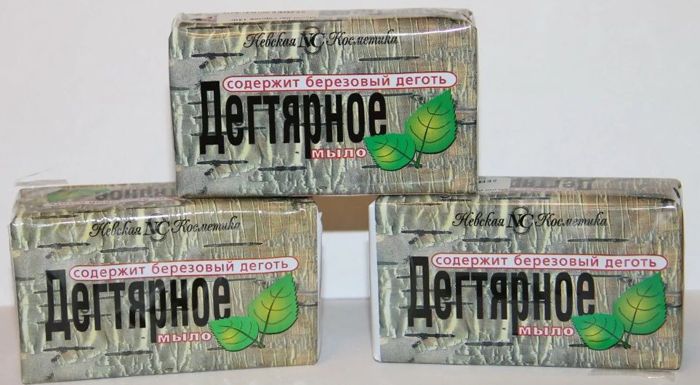
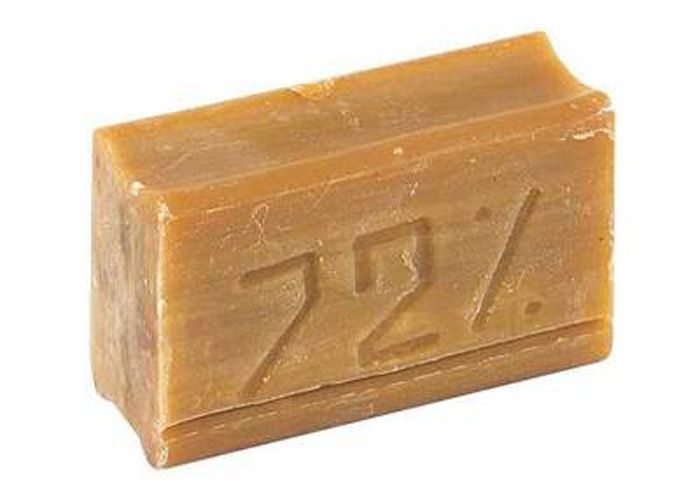
The duration of treatment is determined by the change in the appearance of the formation: as soon as it begins to redden and peel off, therapy must be completed. After a while, it will disappear on its own.
Get rid of acne with garlic
Traditional medicine offers many options for miraculous recipes that will help get rid of the plantar sole with garlic.
- The most common option: a crushed clove of garlic must be applied to the affected area of the epidermis, covered from above with a dry and clean napkin (bandage). The bandage should be left for 15-20 minutes and so on for a week.
- Another option: pass a clove of garlic through a garlic press, mix garlic gruel with butter or ground bacon (some healers recommend nutria) in a ratio of 1: 1, and, after applying a small amount of mass on a cotton pad, attach with a patch to the skin area with wart. The exposure time is 30 minutes, and so every day for 20 days.
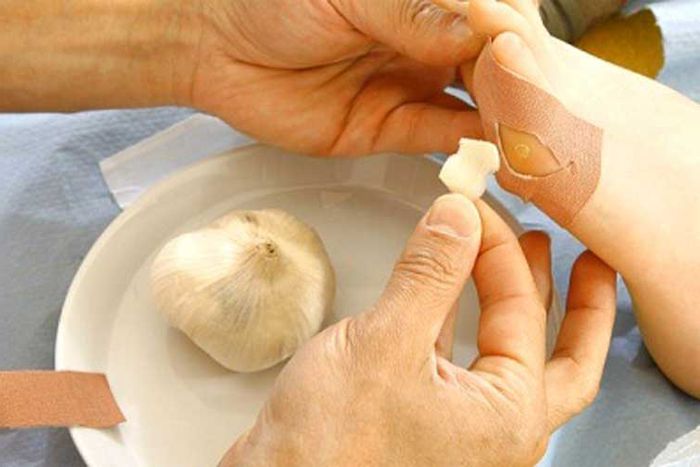
Celandine
Celandine is one of the most popular means for removing warts, known to people since ancient times. Based on the juice secreted from the plant, many treatment regimens for plantar warts in folk medicine are compiled. Here are some of them:
- The easiest way is to lubricate the growth with the stem of a fresh plant 5-6 times a day for 2 weeks: this time, according to folk healers, is enough to ensure that there is no trace of unpleasant formations.
- Another way: 15 ml of plant juice must be mixed with 4 tbsp. vaseline oil. Spread the affected area with the resulting ointment twice a day for 5 days, after a 2-day break and the course is repeated. The total duration of treatment is 1 month, then a 3-month break and a repetition of the treatment regimen.
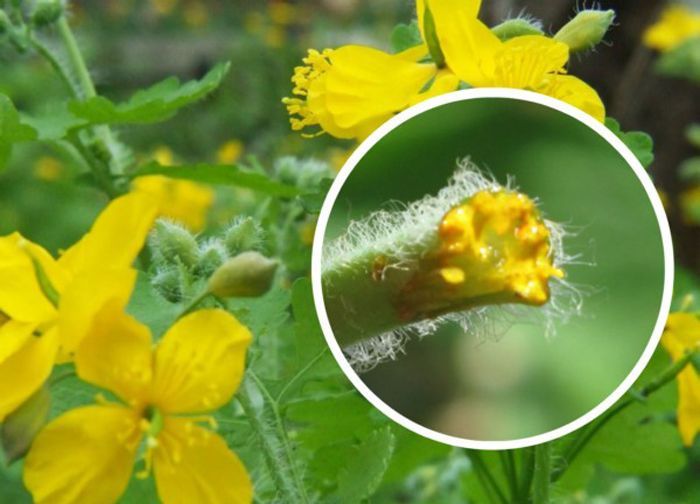
Vinegar
- Acetic acid (70%) will effectively help to cope with a small spike. To do this, it must be mixed with wheat flour to a mushy state. This mass should be applied to the area of skin with a wart and covered with a bandage folded in several layers, secured with a plaster. Frequency of application – 2 times a day until the complete disappearance of formations.
- Some sources claim that acetic acid can be dropped directly onto the formation. You can also use 9% vinegar for this purpose, but in this case, the treatment may be delayed.

Potato
One of the low-cost and effective ways to get rid of warts on the soles of the feet is potato therapy. To do this, you need to take a medium-sized tuber, wash it thoroughly, chop it with a fine grater.
Apply the resulting slurry to the sore spot, cover it with polyethylene, and then put on a sock. In this state, go to bed. In the morning, everything should be removed, the rest of the mass should be washed off with warm water. Duration of the course – every day, at night, for 12-14 days.
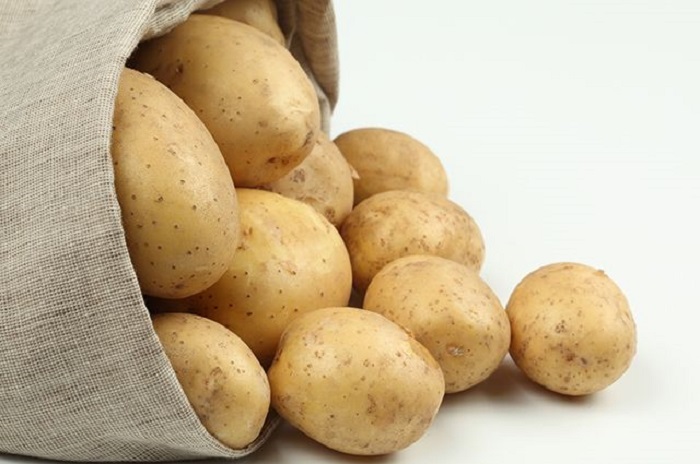
Aloe and Kalanchoe
- A good tool is an aloe leaf cut along, attached (gauze + adhesive tape) to the sole at night. In the morning, the place with the formation must be washed and rubbed with a little pumice stone.
- Steam your feet in soapy water with a small amount of baking soda. Apply crushed leaves of aloe or Kalanchoe to the affected area, and after fixing, leave overnight. Repeat the procedure daily until the complete disappearance of the spine.
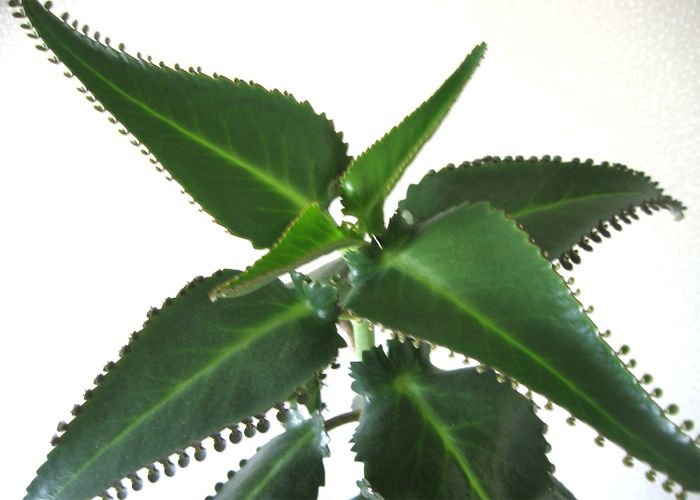
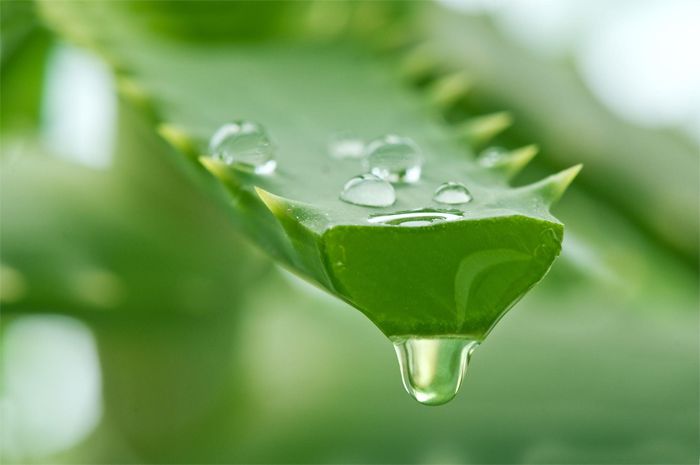
Propolis
The recipe with a natural substance – propolis – is very simple: you need to knead a small piece of it with your hands and form a plate out of it.
It must be applied to the affected area and fixed with a napkin and a band-aid. It is necessary to forget about the remedy for a couple of days, after which everything should be repeated, attaching a new “medicine” to the wart.
The general course of treatment is up to five weeks. An important note: each time, before applying propolis, the feet should be steamed in warm water and treated with pumice.
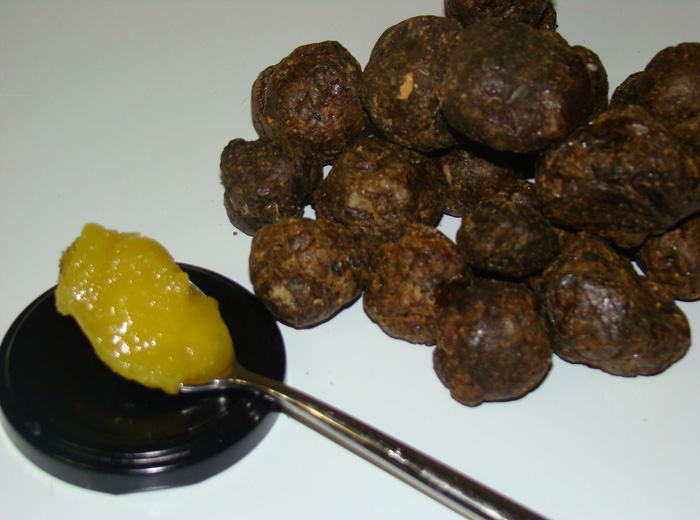
Plum and salt
A rather interesting way to get rid of thorns is an infusion of plums with salt, which is used as a compress on the affected area.
To prepare it, mix 50 ml of boiled water and st. l. salt. There also put gruel from the pulp of ripe plums. The infusion must be left for a day, then pour 15 ml of table vinegar (9%) there.
Moisten a clean cloth in the product, apply to the growth, fix and leave overnight. The frequency of the procedure is daily, until complete recovery.
Treatment with plant essential oils
A simple and effective way to remove plantar warts is to rub essential oil into the sole several times a day until the expected effect.
Of all the oils, tea tree oil , lemon oil, thyme or oregano oil are the most suitable . In order to avoid skin irritation, experts recommend mixing any essential oil with olive oil in a 1:1 ratio before use.
To enhance the effect, you can cover the oiled area with polyethylene and put a sock on top, and after 2 hours remove everything by washing your foot with warm water.
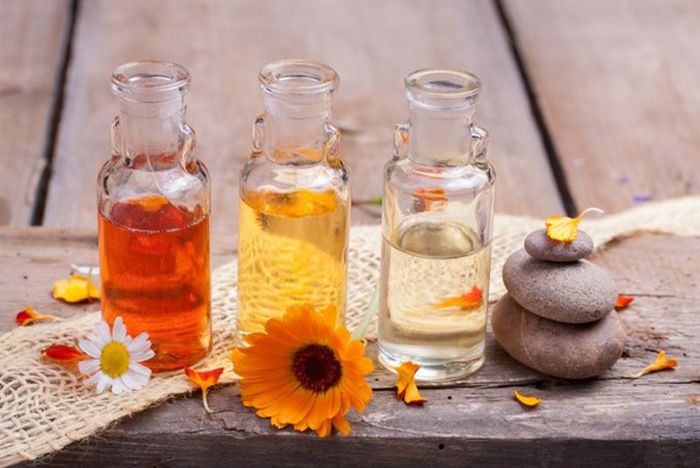
Ash
Ash is a very useful substance that can provide significant assistance in the fight against thorns. To do this, it must be diluted in water to the state of a cream, which is applied to the affected area. Top – polyethylene, tissue napkin, fixative (bandage, sock).
After a couple of hours, you can remove everything, wash off the remnants of the product with water. It is necessary to apply a miracle recipe in the morning and in the evening until the formation disappears.
Salt and soda
Help in removing the formation can be such means that are available in any kitchen – salt and soda. True, for home therapy it is better to take iodized salt.
To prepare a healing bath, you need 3 tsp. iodized salt and 1 tsp. soda in hot water, dip your feet in water and steam them for 15 minutes.
After the procedure, the problem area should be lightly rubbed with a coarse pumice stone to remove exfoliated cells. Duration – daily, until the complete disappearance of the spine.
Egg
A fresh domestic egg must be broken, poured into a container, and the remaining protein from the inner surface of the shell must be lubricated with the affected area 2 times a day for 2-3 months.
It should be noted that folk methods of treatment will have the maximum effect at the very beginning of the development of a plantar wart: it makes no sense to treat old formations with improvised means.
Therefore, one should not delay treatment, but try to get rid of papilloma as early as possible. Of course, it is advisable to coordinate any alternative method of treatment with a doctor beforehand in order to avoid health problems. Take care of yourself!







